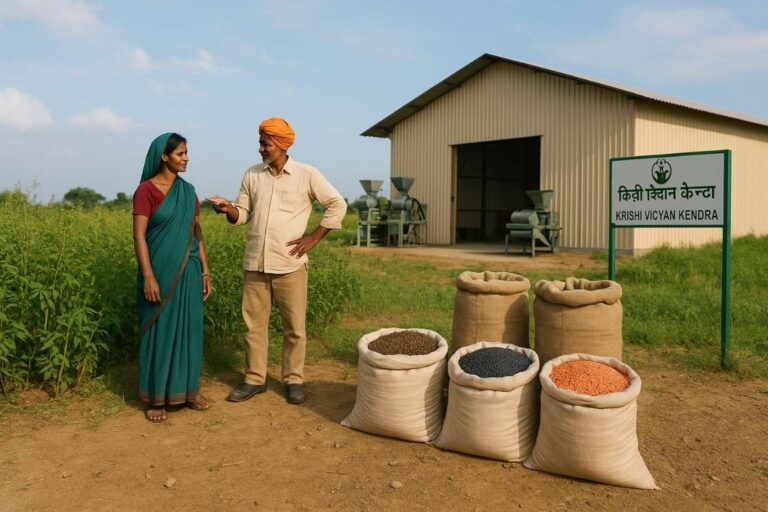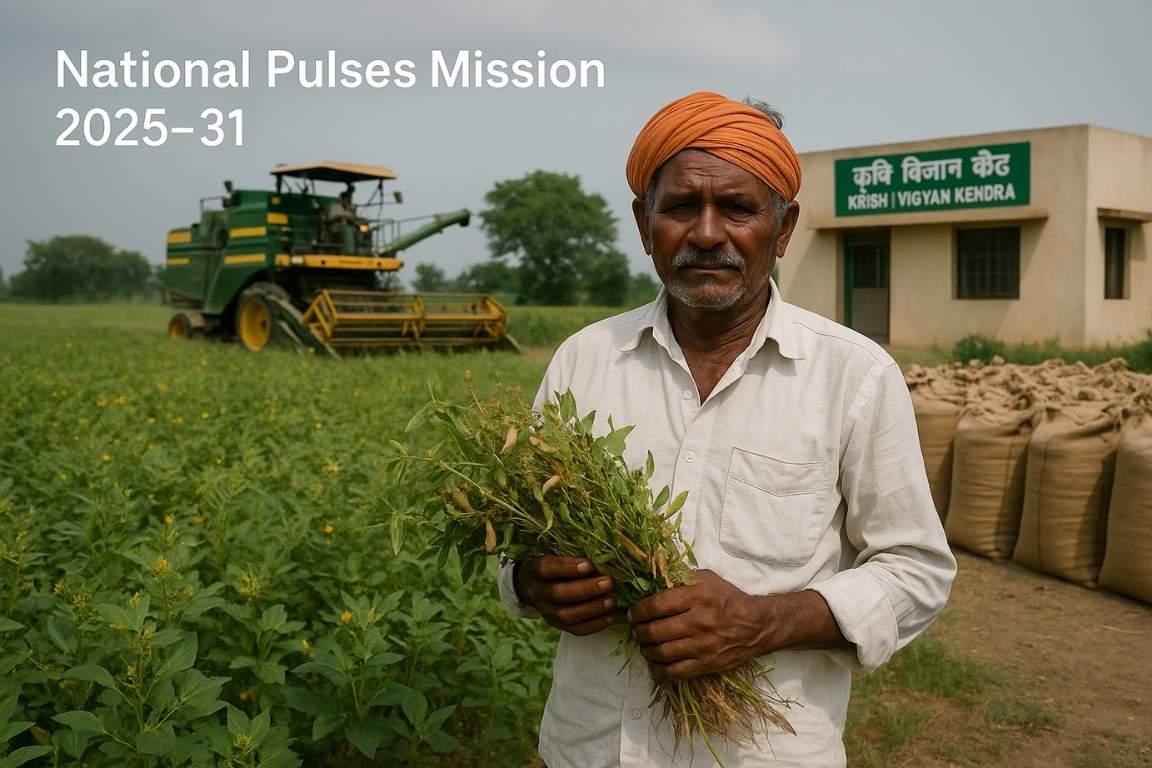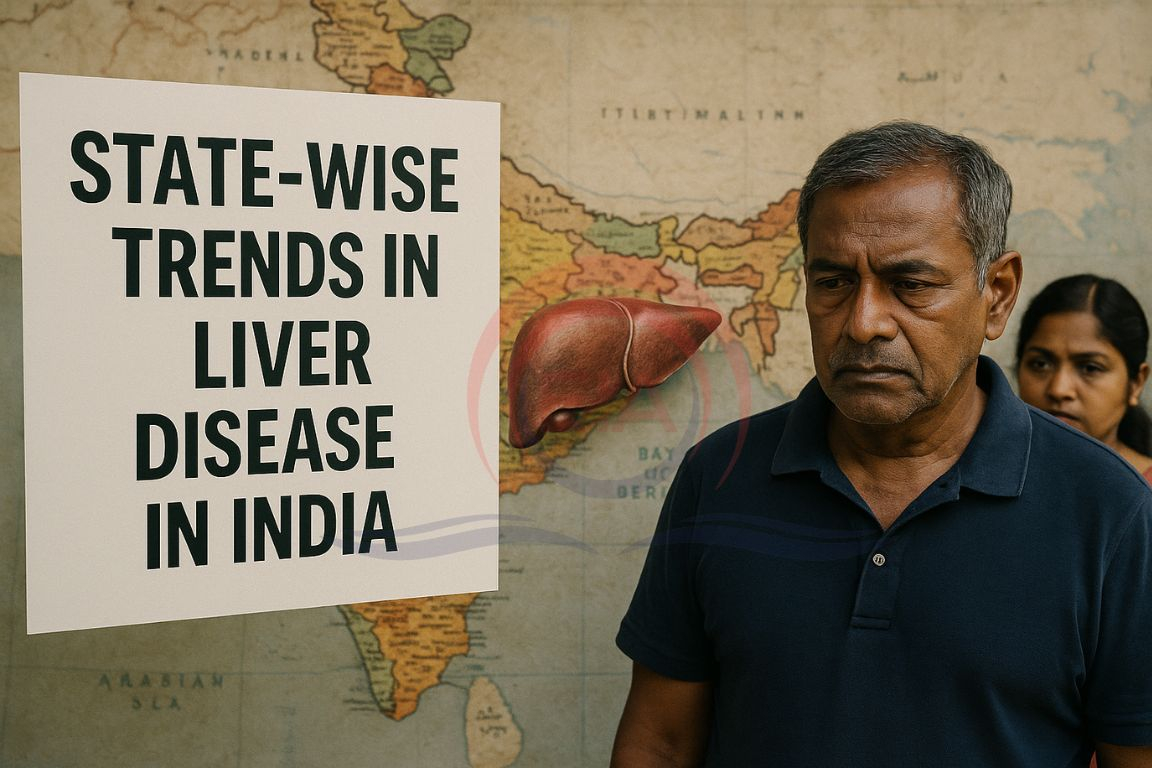The Union Cabinet, chaired by the Prime Minister, has approved the ‘Mission for Aatmanirbharta in Pulses’, a six-year plan (2025–31) to make India self-reliant in pulse production and reduce import dependence.
About the National Pulses Mission
- Duration: 2025–26 to 2030–31 (6 years)
- Total Outlay: ₹11,440 crore
- Objective: To achieve self-sufficiency (Aatmanirbharta) in major pulses such as Tur (Arhar), Urad, and Masoor.
- Support Agencies:
- ICAR (Indian Council of Agricultural Research)
- Krishi Vigyan Kendras (KVKs)
- State Governments and Agricultural Departments

Key Features
- Seed Development & Distribution: Promotion of high-yielding, pest- and climate-resistant varieties. Distribution of 126 lakh quintals of certified seeds and 88 lakh seed kits free to farmers.
- Area Expansion: Aim to add 35 lakh hectares under pulse cultivation, particularly in rice fallow lands.
- Post-Harvest Infrastructure: Establishment of 1,000 pulse processing units with government subsidies. Development of storage and value-addition facilities.
- Assured Procurement: 100% procurement of Tur, Urad, and Masoor under the PM-AASHA scheme to ensure price stability.
- Comprehensive Strategy: Focus on research, extension, market linkages, and price assurance to make pulses farming profitable.
Rationale Behind the Mission
- Rising Import Dependenc: In 2024–25, India imported 7.3 million tonnes of pulses worth $5.5 billion. Domestic output remains stagnant due to climate shocks and low area coverage.
- Growing Demand: Urbanization and changing diets have pushed consumption beyond domestic supply.
- Goal of Self-Reliance: Reduce import bills, improve farmer income, and strengthen food security.
Challenges
- Price volatility in international markets.
- Climatic risks like droughts and erratic monsoons.
- Post-harvest losses due to weak storage systems.
- Low preference for pulses over MSP-backed crops like rice and wheat.
Way Forward
- Build a strong seed–market–storage chain.
- Encourage intercropping of pulses in rice/wheat zones.
- Expand irrigation and mechanization support for pulse farmers.
- Include pulses in PDS and Mid-Day Meals to boost demand.
- Promote FPOs and digital platforms for better price discovery.
Conclusion
India is the largest producer and consumer of pulses, yet imports meet a significant share of demand. The National Pulses Mission is a strategic step toward Atmanirbharta





